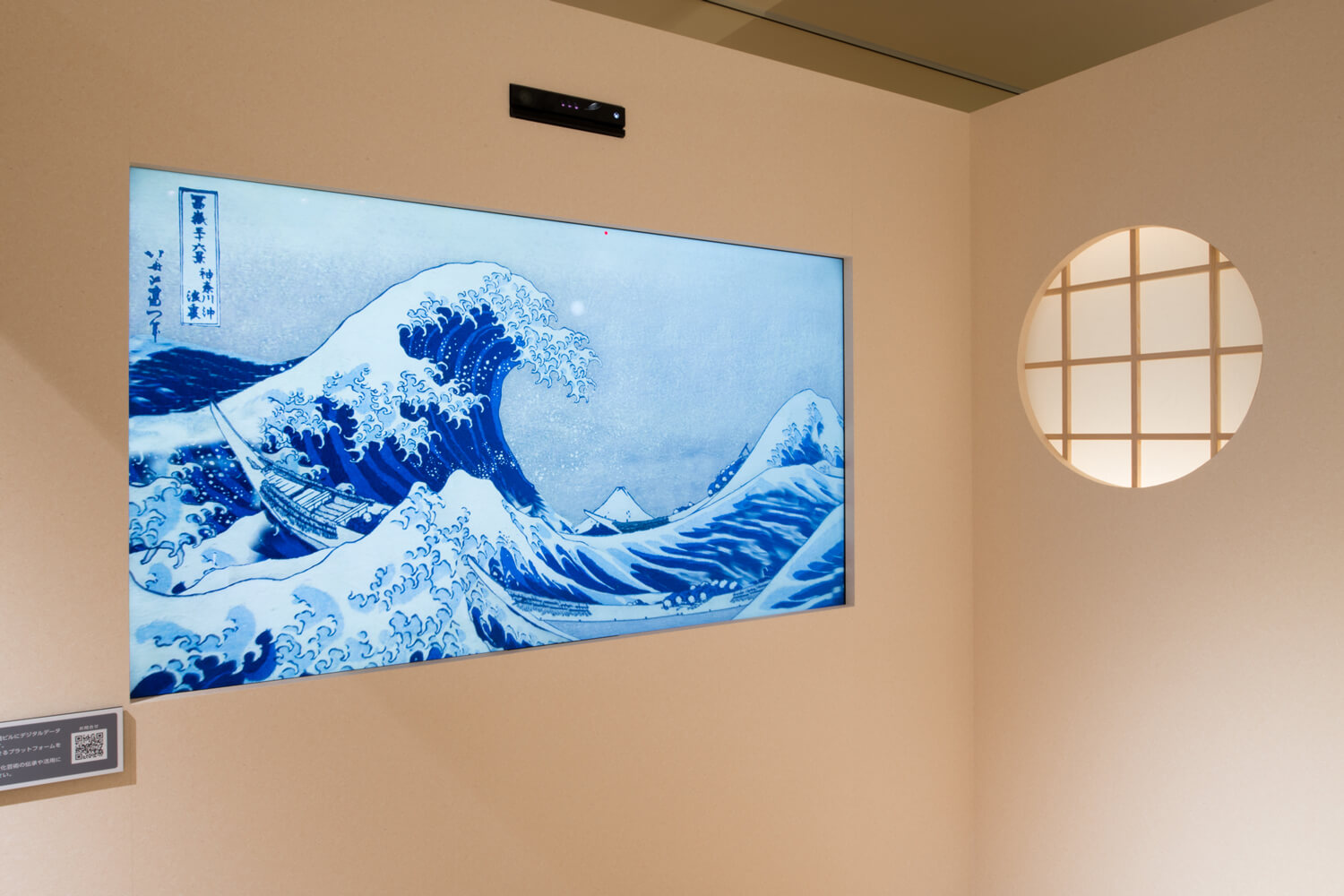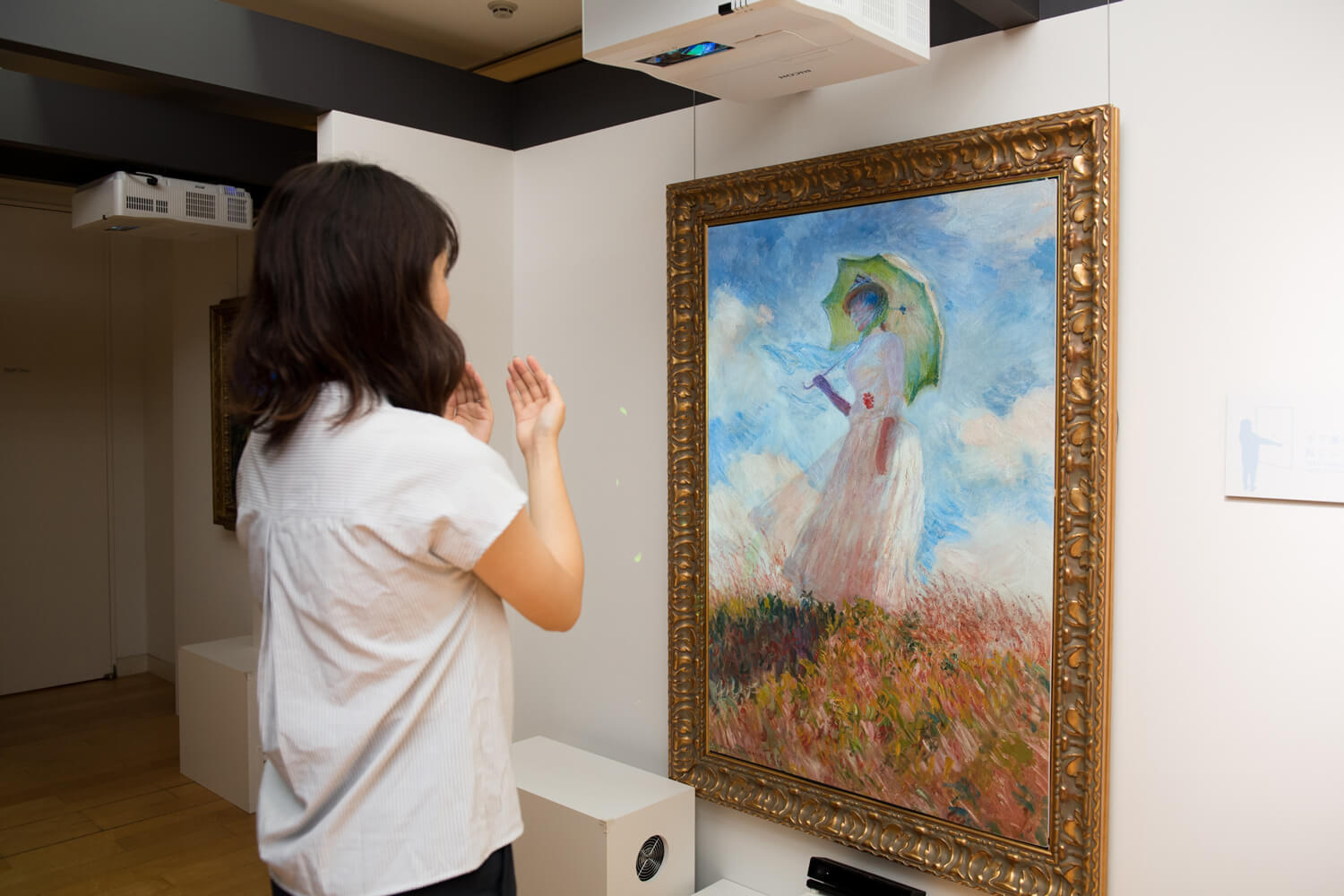Hokusai in the Age of Digital Innovation

Tucked away from the hustle and bustle of central Shinjuku, NTT East’s Intercommunication Center in Nishi-Shinjuku is a dark horse in cutting-edge technology. Showcasing innovative technologies able to archive and replicate cultural properties in unprecedented ways, their new exhibition, ‘Digital x Hokusai’ brings together the nation’s beloved Ukiyo-e artist, Katsushika Hokusai, and European Japonism paintings of the 19th century, with a modern twist.
Hokusai’s centuries-old series ‘Thirty-six Views of Mount Fuji’ – publicly accessible only a few times each year – has here been digitally archived and reproduced in an uncanny act of mimesis. Scanned from multiple angles, fiber by fiber, the result is a reproduction faithful to the intricacies and nuances of the original unlike any other form of imitation. Broadcast to a high-resolution, multi-vector screen in the gallery space, this detailed encounter, previously experienced only fleetingly at temporary exhibitions, is made indelible through digitization. A single frame hosts a slideshow of rotating reproductions, overcoming the spatial limitations of the gallery. Invulnerable to light, air, and human touch, these reproductions can be viewed in far brighter settings, making glass or rope barriers redundant. Temporal and geographic restrictions are also eliminated; the result is an intimate viewing experience promising worldwide accessibility.
In addition to preserving great works of art, ‘Digital x Hokusai’ is also about enhancing the gallery-going experience for a modern audience. Goggle-less VR allows visitors to zoom in on a Hokusai at a high rate of definition simply by moving their body slightly forward, while sweeping hand gestures whip up a virtual gust of wind across the surface of ‘Woman with a Parasol’, enhancing the kinetic sensation of a breeze proposed by Monet. Likewise, twirling one’s hands in front of Van Gogh’s ‘Starry Night Over the Rhone’ sends stardust dancing across the surface of the artwork.
From conservation to innovation, the technology presented in ‘Digital x Hokusai’ has implications for the wider world, including all art media, as well as the preservation of historical documents, agricultural practices, and traditional festivals. In Japan, the occurrences of earthquakes, tsunamis, and typhoons threaten tangible cultural properties, while the nation’s aging population foretells a lack of successors to talented artisans of many traditional crafts and technologies. Efforts in digital archiving and preservation like those presented by NTT East thus promise to be a permanent fixture in a variety of fields going forward.

TRENDING
-
The Tattoos that Marked the Criminals of the Edo Period
Traditional tattoos were strong signifiers; murderers had head tattoos, while theft might result in an arm tattoo.

-
The Story of Sada Yacco, the Geisha who Bewitched Europe
Described by Dazed magazine as the first beauty influencer, she has been restored to her former glory since 2019.

-
Chiharu Shiota, Red Threads of the Soul
Last year, more than 660,000 people visited the retrospective 'Chiharu Shiota: The Soul Trembles' exhibit at the Mori Art Museum.

-
Japanese Left-field Pop From The CD Age, 1989-1996
‘Heisei No Oto’, a compilation of hidden gems in the unspoken depths of Japanese pop, reveal blissful moment of technological possibility.

-
‘Shojo Tsubaki’, A Freakshow
Underground manga artist Suehiro Maruo’s infamous masterpiece canonised a historical fascination towards the erotic-grotesque genre.





